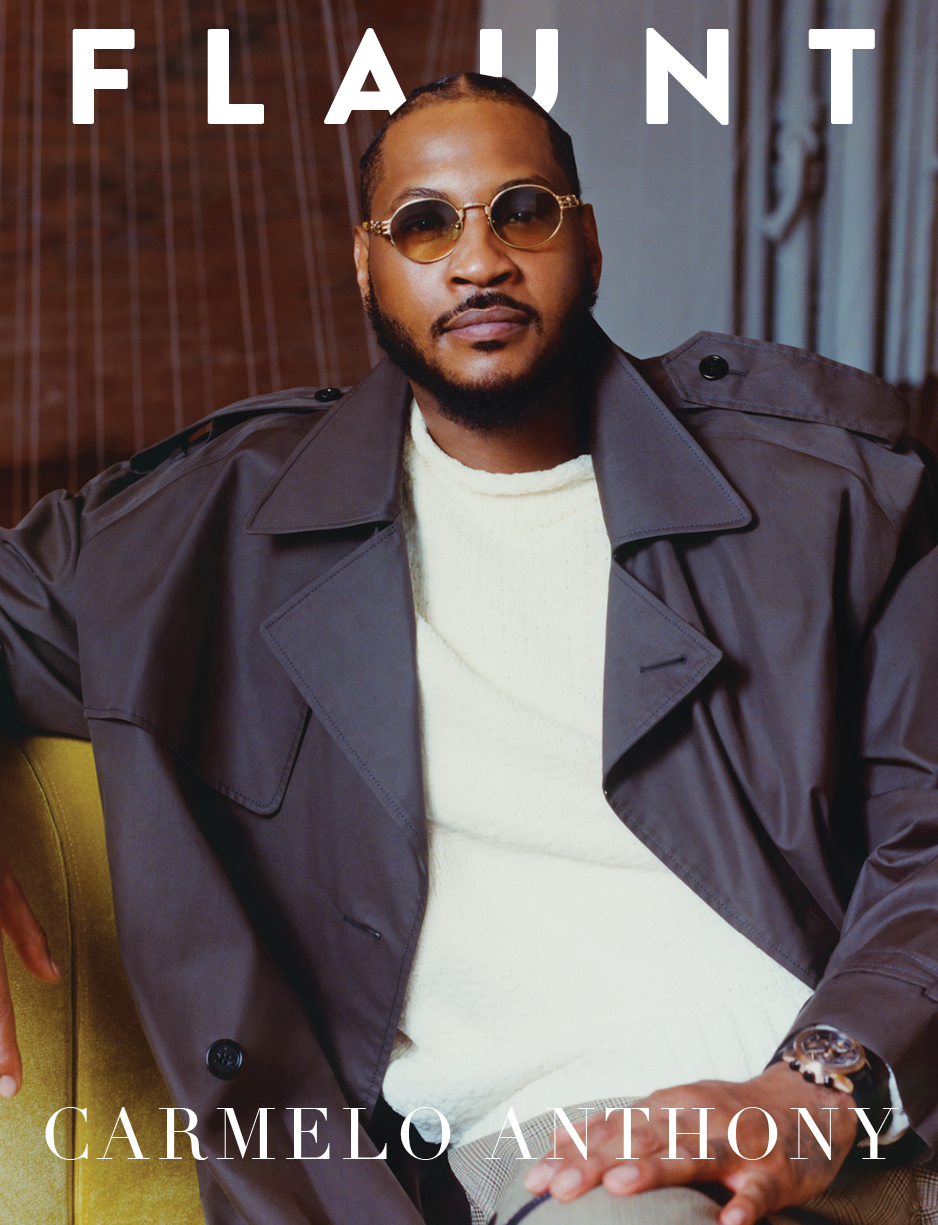

Photographed by [Nadine Fraczkowski](https://www.instagram.com/nad_1n3/?hl=en)
It was 2017 when Hessian artist [Anne Imhof](https://www.instagram.com/anne_imhof/?hl=de) received the Venice Biennale’s Golden Lion Award in Best National Participation for exhibition, _Faust._ The barking Dobermans, disinfectant reek, lithe but anxious participants, and original soundtrack (co-written and produced by Imhof collaborators [Eliza Douglas](https://www.instagram.com/elizad0uglas/), [Billy Bultheel](https://www.instagram.com/billjohnbultheel/), and [Franziska Aigner](https://www.instagram.com/franziskaaaigner/)), penetrated the German Pavilion, and sparked a dialogue on what role performance pieces have in times bleak. Now, from [Bill Kouligas](https://www.instagram.com/bill_kouligas/)’ Berlin-based [PAN](https://delinear.p-a-n.org/)—a label releasing a delightful potpourri of genres, time signatures, and ephemera— comes _Faust’s_ [soundtrack](https://p-a-n.org/product/anne-imhof-faust-pan-98/) off the platform’s new offshoot series, ENTOPIA. The release is accompanied by a booklet of photographs from longtime contemporary, [Nadine Fraczkowski](https://www.instagram.com/nad_1n3/?hl=en), who encapsulates and cultivates the _Faustian_ spirit. Nearly ninety minutes of distorted, contorted, baroque and gothic opera, what do _Faust_’s music and legacy, removed from their original setting and context, mean now? For this, we speak with the maestri themselves.
**Much of the soundtrack to _Faust_** **is reminiscent of some of the experimental neo-medieval tracks of artists like** [**Elysia Crampton**](https://soundcloud.com/eande) **and** [**Chino Amobi**](https://soundcloud.com/chinoamobi)**. Who were some influences? What was the foundation making like?**
**Anne Imhof:** I wanted the sound of _Faust_ to be that of a concert, carried by songs. The melody for “Medusa’s Song” was in my head for a long time, and once in the studio in Frankfurt, Eliza and I created the vocals for it, and it became somewhat of a theme and basis for many of the other pieces. Billy then transformed chord progressions into marches, fugues, and pieces that reveal his interest in medieval and early renaissance music. To me, they appear as noisy ancient love songs in classical camouflage. I like harpsichord, grand piano and trumpet sounds, which Billy worked into compositions like “Headbanger,” “Opening March,” and “Guitar Piece.” Influences reach far and wide—from Jean-Baptiste Lully to Messiaen. Billy played me Messiaen’s “Quartet for the End of Time,” which became an important influence for him, and formed an anchor point for us conceptually throughout the whole music making. Angelo Badalamenti was another influence, particularly on “Queen Song,” which Eliza brought in early on.
**Billy Bultheel:** Anne has a background in punk and noise, Eliza in folk and noise music. Franziska has played the cello since an early age. I myself have been playing piano from the age of 9, and studied medieval and electronic music at the conservatory of The Hague. The soundtrack to Kubrick’s _Eyes Wide Shut_ also had an influence on me, especially the seamless combination of contemporary classical music, bombastic romantic orchestral works, and pop songs.


Photographed by [Nadine Fraczkowski](https://www.instagram.com/nad_1n3/?hl=en)
**How can _Faust_ the soundtrack be absorbed and interpreted when not played to _Faust_** **the performance? How does it change?**
**Franziska Aigner:** After finishing _Angst_ in 2016, we realized that we have next to no documentation apart from Nadine’s photo. These performances are very hard to document. On the one hand, they are so vast and span many, many hours. On the other hand, they depend so much on the encounters that each of us have with the audience. How can one document such a thing? The music is the soundtrack to the performance, it carries so much of the emotional tone that the shows are coated in, and
it is the score that we, the performers, organize around. Once we started working on the album, the documentary aspect soon became more flexible, however. There was not only a long selection process to what to include on the album, but also most pieces have been reworked, re-recorded, edited, or at least remixed. So I think it might be more adequate to say that we found a new house for _Faust_ to live in. It’s as if the performance has been transposed into the medium of an album.
**Despite the exhibition’s very Berlinian youth aesthetic (sportswear, fetish/S&M gear, androgyny), _Faust_’s music is absent of techno-adjacent motifs. Was there a deliberate choice to eschew that?**
**Billy Bultheel:** This is something that might have happened because that is just our surroundings and everyday environment. The music functions as the backbone of a performance work that exists of many layers, and in a way is an articulation of the struggles we meet in life ourselves. The styles of music were just the ways in which we felt we could express that the best. Also, given that we have backgrounds in baroque, contemporary and noise and piano music, those seemed to be the best ways for us to translate our ideas musically.
**Screaming plays a large role not only in the exhibition but also in the soundtrack. On the song, “Faust’s Last Song II,” screams loop for so long that the shrieks eventually become disarmed, neutralized, and rendered almost like a regular percussive instrument. Can you explain why that is central to the exhibition?**
**Eliza Douglas:** When Anne first showed me the floor plan for the pavilion, I saw there were two smaller rooms adjacent to the main large space that mirrored each other. I thought it would be cool to turn each room into a giant speaker of sorts, producing a stereo effect for the audience that would inevitably be between them. I also liked that an audience member’s sonic experience would drastically change depending on where they are standing. I had the idea to use just my voice, and layer it over itself, again and again, with loop pedals. I would start building a track in one of the rooms, and then walk over to the other room and start building a second one there. Over time the sound got thicker and thicker, and then more and more distorted. Eventually I would add screams in. So what began as a somewhat operatic track over time, shifted into a more cacophonous death metal-y sound. I first started screaming in Anne’s work in her previous work, _Angst_. We have continued to use it since. It is a way of using my voice that I find very satisfying, and I also like the textures it produces. It is potently emotive. I can feel vulnerable, overwhelmed, empowered, or even angry during these shows, and it is a natural and cathartic expression. During the scenes where I looped my screams in “Faust’s Last Song II,” Anne also encouraged other performers to scream, which produced a really nice mixture of amplified and acoustic screams.


Photographed by [Nadine Fraczkowski](https://www.instagram.com/nad_1n3/?hl=en)
**You have all collaborated with Imhof in multiple capacities before, and been familiar with her work. Did the experience of working on _Faust_** **feel like a climactic culmination of sorts?**
**Franziska Aigner:** Yeah, it definitely felt like that to me. When we started working on the performance of _Faust_, Anne, Billy and myself had been working together for 5, maybe 6 years already. Eliza had joined later down the line, and Billy and myself had been working together on other projects for much longer already. But _Faust_ was definitely the biggest thing any of us ever had worked on. But we all really grew into ourselves. It’s quite beautiful to see the development from some of the first, rather small-scale performances until _Faust_, which took place across so many different spaces and over the duration of 7 months.
**Can you please expand on and share how lyrics were written and chosen?**
**Eliza Douglas:** I try to make music that will help inspire potent images, be a strong basis for performative elements that will spring from it, or be a good supplement to Anne’s vision. Because of the nature of Anne’s work, I found it important that the lyrics convey strong images, leave a lot of room for interpretation, and are not overly personal. “Medusa” was written because Anne was looking at a lot of Caravaggio while making _Faust_. I wanted to fuse that imagery with reference to the experience of performing—a meta element. “Queen Song” is built from lines I took from a poem my uncle Paul wrote before he died of AIDS in the ‘90s. He was a talented poet and I feel close to him, so I liked the idea of letting people experience a part of him through me.
**Franziska Aigner:** “O.W.E.N.” is a true devotional song to knowledge and wisdom and properly Faustian in that respect. It’s a quite mystical call to learn to see into the inner being of the world, about the nature of the name and how, at the same time, one would do well to let things be. It is spiked with Goethe references and ends in this rather epic howl, as if in the course of questioning, I had lost my wild delight.
**Has Fraczkowski’s photography added a new layer to this project? How so, and how did you come to choose her for this collaboration? Are there more collaborations in the works?**
**Anne Imhof:** Nadine and I worked and lived together in our early tweens. When I started doing live work, Nadine was naturally the person to ask to take pictures. She is not “documenting“ in a classical sense. Her photography goes beyond the pieces and has a life of its own. For me, it is an amazing way of working as I am able to try out a lot in the shoots we usually do in preparation for a show. I mostly work with her and Eliza on those, and we’re a good match as there is trust to fool around and feel safe, but be challenged at the same time. Nadine is friends with all of us and often takes pictures while we’re on tour or preparing for a new piece. Eliza, Fran, Billy and all the others, including myself, we all had our picture taken by her on numerous occasions. She has shaped the overall aesthetic of how the work is represented visually.
 
Photographed by [Nadine Fraczkowski](https://www.instagram.com/nad_1n3/?hl=en)
It was 2017 when Hessian artist [Anne Imhof](https://www.instagram.com/anne_imhof/?hl=de) received the Venice Biennale’s Golden Lion Award in Best National Participation for exhibition, _Faust._ The barking Dobermans, disinfectant reek, lithe but anxious participants, and original soundtrack (co-written and produced by Imhof collaborators [Eliza Douglas](https://www.instagram.com/elizad0uglas/), [Billy Bultheel](https://www.instagram.com/billjohnbultheel/), and [Franziska Aigner](https://www.instagram.com/franziskaaaigner/)), penetrated the German Pavilion, and sparked a dialogue on what role performance pieces have in times bleak. Now, from [Bill Kouligas](https://www.instagram.com/bill_kouligas/)’ Berlin-based [PAN](https://delinear.p-a-n.org/)—a label releasing a delightful potpourri of genres, time signatures, and ephemera— comes _Faust’s_ [soundtrack](https://p-a-n.org/product/anne-imhof-faust-pan-98/) off the platform’s new offshoot series, ENTOPIA. The release is accompanied by a booklet of photographs from longtime contemporary, [Nadine Fraczkowski](https://www.instagram.com/nad_1n3/?hl=en), who encapsulates and cultivates the _Faustian_ spirit. Nearly ninety minutes of distorted, contorted, baroque and gothic opera, what do _Faust_’s music and legacy, removed from their original setting and context, mean now? For this, we speak with the maestri themselves.
**Much of the soundtrack to _Faust_** **is reminiscent of some of the experimental neo-medieval tracks of artists like** [**Elysia Crampton**](https://soundcloud.com/eande) **and** [**Chino Amobi**](https://soundcloud.com/chinoamobi)**. Who were some influences? What was the foundation making like?**
**Anne Imhof:** I wanted the sound of _Faust_ to be that of a concert, carried by songs. The melody for “Medusa’s Song” was in my head for a long time, and once in the studio in Frankfurt, Eliza and I created the vocals for it, and it became somewhat of a theme and basis for many of the other pieces. Billy then transformed chord progressions into marches, fugues, and pieces that reveal his interest in medieval and early renaissance music. To me, they appear as noisy ancient love songs in classical camouflage. I like harpsichord, grand piano and trumpet sounds, which Billy worked into compositions like “Headbanger,” “Opening March,” and “Guitar Piece.” Influences reach far and wide—from Jean-Baptiste Lully to Messiaen. Billy played me Messiaen’s “Quartet for the End of Time,” which became an important influence for him, and formed an anchor point for us conceptually throughout the whole music making. Angelo Badalamenti was another influence, particularly on “Queen Song,” which Eliza brought in early on.
**Billy Bultheel:** Anne has a background in punk and noise, Eliza in folk and noise music. Franziska has played the cello since an early age. I myself have been playing piano from the age of 9, and studied medieval and electronic music at the conservatory of The Hague. The soundtrack to Kubrick’s _Eyes Wide Shut_ also had an influence on me, especially the seamless combination of contemporary classical music, bombastic romantic orchestral works, and pop songs.

Photographed by [Nadine Fraczkowski](https://www.instagram.com/nad_1n3/?hl=en)
It was 2017 when Hessian artist [Anne Imhof](https://www.instagram.com/anne_imhof/?hl=de) received the Venice Biennale’s Golden Lion Award in Best National Participation for exhibition, _Faust._ The barking Dobermans, disinfectant reek, lithe but anxious participants, and original soundtrack (co-written and produced by Imhof collaborators [Eliza Douglas](https://www.instagram.com/elizad0uglas/), [Billy Bultheel](https://www.instagram.com/billjohnbultheel/), and [Franziska Aigner](https://www.instagram.com/franziskaaaigner/)), penetrated the German Pavilion, and sparked a dialogue on what role performance pieces have in times bleak. Now, from [Bill Kouligas](https://www.instagram.com/bill_kouligas/)’ Berlin-based [PAN](https://delinear.p-a-n.org/)—a label releasing a delightful potpourri of genres, time signatures, and ephemera— comes _Faust’s_ [soundtrack](https://p-a-n.org/product/anne-imhof-faust-pan-98/) off the platform’s new offshoot series, ENTOPIA. The release is accompanied by a booklet of photographs from longtime contemporary, [Nadine Fraczkowski](https://www.instagram.com/nad_1n3/?hl=en), who encapsulates and cultivates the _Faustian_ spirit. Nearly ninety minutes of distorted, contorted, baroque and gothic opera, what do _Faust_’s music and legacy, removed from their original setting and context, mean now? For this, we speak with the maestri themselves.
**Much of the soundtrack to _Faust_** **is reminiscent of some of the experimental neo-medieval tracks of artists like** [**Elysia Crampton**](https://soundcloud.com/eande) **and** [**Chino Amobi**](https://soundcloud.com/chinoamobi)**. Who were some influences? What was the foundation making like?**
**Anne Imhof:** I wanted the sound of _Faust_ to be that of a concert, carried by songs. The melody for “Medusa’s Song” was in my head for a long time, and once in the studio in Frankfurt, Eliza and I created the vocals for it, and it became somewhat of a theme and basis for many of the other pieces. Billy then transformed chord progressions into marches, fugues, and pieces that reveal his interest in medieval and early renaissance music. To me, they appear as noisy ancient love songs in classical camouflage. I like harpsichord, grand piano and trumpet sounds, which Billy worked into compositions like “Headbanger,” “Opening March,” and “Guitar Piece.” Influences reach far and wide—from Jean-Baptiste Lully to Messiaen. Billy played me Messiaen’s “Quartet for the End of Time,” which became an important influence for him, and formed an anchor point for us conceptually throughout the whole music making. Angelo Badalamenti was another influence, particularly on “Queen Song,” which Eliza brought in early on.
**Billy Bultheel:** Anne has a background in punk and noise, Eliza in folk and noise music. Franziska has played the cello since an early age. I myself have been playing piano from the age of 9, and studied medieval and electronic music at the conservatory of The Hague. The soundtrack to Kubrick’s _Eyes Wide Shut_ also had an influence on me, especially the seamless combination of contemporary classical music, bombastic romantic orchestral works, and pop songs.
 
Photographed by [Nadine Fraczkowski](https://www.instagram.com/nad_1n3/?hl=en)
**How can _Faust_ the soundtrack be absorbed and interpreted when not played to _Faust_** **the performance? How does it change?**
**Franziska Aigner:** After finishing _Angst_ in 2016, we realized that we have next to no documentation apart from Nadine’s photo. These performances are very hard to document. On the one hand, they are so vast and span many, many hours. On the other hand, they depend so much on the encounters that each of us have with the audience. How can one document such a thing? The music is the soundtrack to the performance, it carries so much of the emotional tone that the shows are coated in, and
it is the score that we, the performers, organize around. Once we started working on the album, the documentary aspect soon became more flexible, however. There was not only a long selection process to what to include on the album, but also most pieces have been reworked, re-recorded, edited, or at least remixed. So I think it might be more adequate to say that we found a new house for _Faust_ to live in. It’s as if the performance has been transposed into the medium of an album.
**Despite the exhibition’s very Berlinian youth aesthetic (sportswear, fetish/S&M gear, androgyny), _Faust_’s music is absent of techno-adjacent motifs. Was there a deliberate choice to eschew that?**
**Billy Bultheel:** This is something that might have happened because that is just our surroundings and everyday environment. The music functions as the backbone of a performance work that exists of many layers, and in a way is an articulation of the struggles we meet in life ourselves. The styles of music were just the ways in which we felt we could express that the best. Also, given that we have backgrounds in baroque, contemporary and noise and piano music, those seemed to be the best ways for us to translate our ideas musically.
**Screaming plays a large role not only in the exhibition but also in the soundtrack. On the song, “Faust’s Last Song II,” screams loop for so long that the shrieks eventually become disarmed, neutralized, and rendered almost like a regular percussive instrument. Can you explain why that is central to the exhibition?**
**Eliza Douglas:** When Anne first showed me the floor plan for the pavilion, I saw there were two smaller rooms adjacent to the main large space that mirrored each other. I thought it would be cool to turn each room into a giant speaker of sorts, producing a stereo effect for the audience that would inevitably be between them. I also liked that an audience member’s sonic experience would drastically change depending on where they are standing. I had the idea to use just my voice, and layer it over itself, again and again, with loop pedals. I would start building a track in one of the rooms, and then walk over to the other room and start building a second one there. Over time the sound got thicker and thicker, and then more and more distorted. Eventually I would add screams in. So what began as a somewhat operatic track over time, shifted into a more cacophonous death metal-y sound. I first started screaming in Anne’s work in her previous work, _Angst_. We have continued to use it since. It is a way of using my voice that I find very satisfying, and I also like the textures it produces. It is potently emotive. I can feel vulnerable, overwhelmed, empowered, or even angry during these shows, and it is a natural and cathartic expression. During the scenes where I looped my screams in “Faust’s Last Song II,” Anne also encouraged other performers to scream, which produced a really nice mixture of amplified and acoustic screams.

Photographed by [Nadine Fraczkowski](https://www.instagram.com/nad_1n3/?hl=en)
**How can _Faust_ the soundtrack be absorbed and interpreted when not played to _Faust_** **the performance? How does it change?**
**Franziska Aigner:** After finishing _Angst_ in 2016, we realized that we have next to no documentation apart from Nadine’s photo. These performances are very hard to document. On the one hand, they are so vast and span many, many hours. On the other hand, they depend so much on the encounters that each of us have with the audience. How can one document such a thing? The music is the soundtrack to the performance, it carries so much of the emotional tone that the shows are coated in, and
it is the score that we, the performers, organize around. Once we started working on the album, the documentary aspect soon became more flexible, however. There was not only a long selection process to what to include on the album, but also most pieces have been reworked, re-recorded, edited, or at least remixed. So I think it might be more adequate to say that we found a new house for _Faust_ to live in. It’s as if the performance has been transposed into the medium of an album.
**Despite the exhibition’s very Berlinian youth aesthetic (sportswear, fetish/S&M gear, androgyny), _Faust_’s music is absent of techno-adjacent motifs. Was there a deliberate choice to eschew that?**
**Billy Bultheel:** This is something that might have happened because that is just our surroundings and everyday environment. The music functions as the backbone of a performance work that exists of many layers, and in a way is an articulation of the struggles we meet in life ourselves. The styles of music were just the ways in which we felt we could express that the best. Also, given that we have backgrounds in baroque, contemporary and noise and piano music, those seemed to be the best ways for us to translate our ideas musically.
**Screaming plays a large role not only in the exhibition but also in the soundtrack. On the song, “Faust’s Last Song II,” screams loop for so long that the shrieks eventually become disarmed, neutralized, and rendered almost like a regular percussive instrument. Can you explain why that is central to the exhibition?**
**Eliza Douglas:** When Anne first showed me the floor plan for the pavilion, I saw there were two smaller rooms adjacent to the main large space that mirrored each other. I thought it would be cool to turn each room into a giant speaker of sorts, producing a stereo effect for the audience that would inevitably be between them. I also liked that an audience member’s sonic experience would drastically change depending on where they are standing. I had the idea to use just my voice, and layer it over itself, again and again, with loop pedals. I would start building a track in one of the rooms, and then walk over to the other room and start building a second one there. Over time the sound got thicker and thicker, and then more and more distorted. Eventually I would add screams in. So what began as a somewhat operatic track over time, shifted into a more cacophonous death metal-y sound. I first started screaming in Anne’s work in her previous work, _Angst_. We have continued to use it since. It is a way of using my voice that I find very satisfying, and I also like the textures it produces. It is potently emotive. I can feel vulnerable, overwhelmed, empowered, or even angry during these shows, and it is a natural and cathartic expression. During the scenes where I looped my screams in “Faust’s Last Song II,” Anne also encouraged other performers to scream, which produced a really nice mixture of amplified and acoustic screams.
 
Photographed by [Nadine Fraczkowski](https://www.instagram.com/nad_1n3/?hl=en)
**You have all collaborated with Imhof in multiple capacities before, and been familiar with her work. Did the experience of working on _Faust_** **feel like a climactic culmination of sorts?**
**Franziska Aigner:** Yeah, it definitely felt like that to me. When we started working on the performance of _Faust_, Anne, Billy and myself had been working together for 5, maybe 6 years already. Eliza had joined later down the line, and Billy and myself had been working together on other projects for much longer already. But _Faust_ was definitely the biggest thing any of us ever had worked on. But we all really grew into ourselves. It’s quite beautiful to see the development from some of the first, rather small-scale performances until _Faust_, which took place across so many different spaces and over the duration of 7 months.
**Can you please expand on and share how lyrics were written and chosen?**
**Eliza Douglas:** I try to make music that will help inspire potent images, be a strong basis for performative elements that will spring from it, or be a good supplement to Anne’s vision. Because of the nature of Anne’s work, I found it important that the lyrics convey strong images, leave a lot of room for interpretation, and are not overly personal. “Medusa” was written because Anne was looking at a lot of Caravaggio while making _Faust_. I wanted to fuse that imagery with reference to the experience of performing—a meta element. “Queen Song” is built from lines I took from a poem my uncle Paul wrote before he died of AIDS in the ‘90s. He was a talented poet and I feel close to him, so I liked the idea of letting people experience a part of him through me.
**Franziska Aigner:** “O.W.E.N.” is a true devotional song to knowledge and wisdom and properly Faustian in that respect. It’s a quite mystical call to learn to see into the inner being of the world, about the nature of the name and how, at the same time, one would do well to let things be. It is spiked with Goethe references and ends in this rather epic howl, as if in the course of questioning, I had lost my wild delight.
**Has Fraczkowski’s photography added a new layer to this project? How so, and how did you come to choose her for this collaboration? Are there more collaborations in the works?**
**Anne Imhof:** Nadine and I worked and lived together in our early tweens. When I started doing live work, Nadine was naturally the person to ask to take pictures. She is not “documenting“ in a classical sense. Her photography goes beyond the pieces and has a life of its own. For me, it is an amazing way of working as I am able to try out a lot in the shoots we usually do in preparation for a show. I mostly work with her and Eliza on those, and we’re a good match as there is trust to fool around and feel safe, but be challenged at the same time. Nadine is friends with all of us and often takes pictures while we’re on tour or preparing for a new piece. Eliza, Fran, Billy and all the others, including myself, we all had our picture taken by her on numerous occasions. She has shaped the overall aesthetic of how the work is represented visually.

Photographed by [Nadine Fraczkowski](https://www.instagram.com/nad_1n3/?hl=en)
**You have all collaborated with Imhof in multiple capacities before, and been familiar with her work. Did the experience of working on _Faust_** **feel like a climactic culmination of sorts?**
**Franziska Aigner:** Yeah, it definitely felt like that to me. When we started working on the performance of _Faust_, Anne, Billy and myself had been working together for 5, maybe 6 years already. Eliza had joined later down the line, and Billy and myself had been working together on other projects for much longer already. But _Faust_ was definitely the biggest thing any of us ever had worked on. But we all really grew into ourselves. It’s quite beautiful to see the development from some of the first, rather small-scale performances until _Faust_, which took place across so many different spaces and over the duration of 7 months.
**Can you please expand on and share how lyrics were written and chosen?**
**Eliza Douglas:** I try to make music that will help inspire potent images, be a strong basis for performative elements that will spring from it, or be a good supplement to Anne’s vision. Because of the nature of Anne’s work, I found it important that the lyrics convey strong images, leave a lot of room for interpretation, and are not overly personal. “Medusa” was written because Anne was looking at a lot of Caravaggio while making _Faust_. I wanted to fuse that imagery with reference to the experience of performing—a meta element. “Queen Song” is built from lines I took from a poem my uncle Paul wrote before he died of AIDS in the ‘90s. He was a talented poet and I feel close to him, so I liked the idea of letting people experience a part of him through me.
**Franziska Aigner:** “O.W.E.N.” is a true devotional song to knowledge and wisdom and properly Faustian in that respect. It’s a quite mystical call to learn to see into the inner being of the world, about the nature of the name and how, at the same time, one would do well to let things be. It is spiked with Goethe references and ends in this rather epic howl, as if in the course of questioning, I had lost my wild delight.
**Has Fraczkowski’s photography added a new layer to this project? How so, and how did you come to choose her for this collaboration? Are there more collaborations in the works?**
**Anne Imhof:** Nadine and I worked and lived together in our early tweens. When I started doing live work, Nadine was naturally the person to ask to take pictures. She is not “documenting“ in a classical sense. Her photography goes beyond the pieces and has a life of its own. For me, it is an amazing way of working as I am able to try out a lot in the shoots we usually do in preparation for a show. I mostly work with her and Eliza on those, and we’re a good match as there is trust to fool around and feel safe, but be challenged at the same time. Nadine is friends with all of us and often takes pictures while we’re on tour or preparing for a new piece. Eliza, Fran, Billy and all the others, including myself, we all had our picture taken by her on numerous occasions. She has shaped the overall aesthetic of how the work is represented visually.


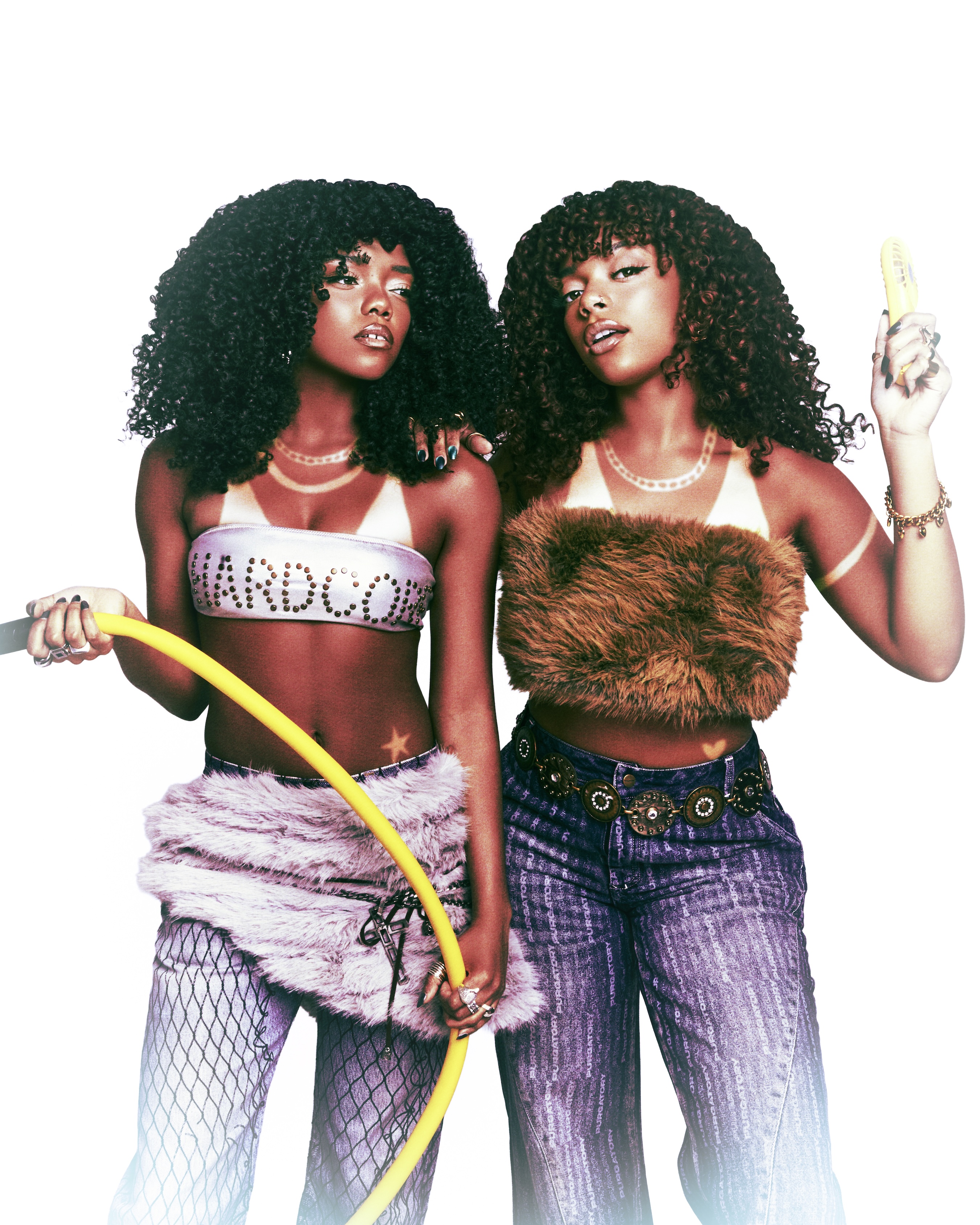
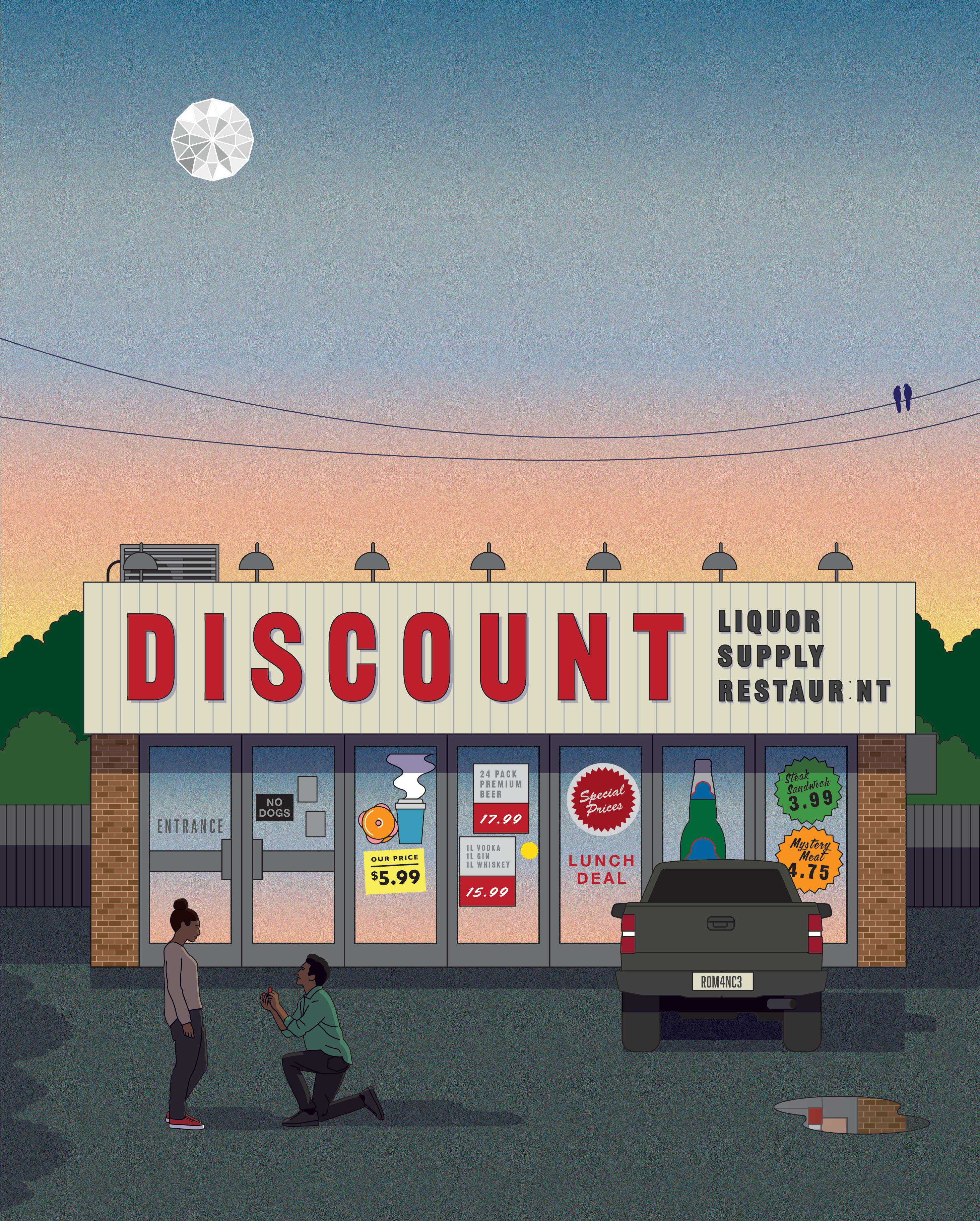
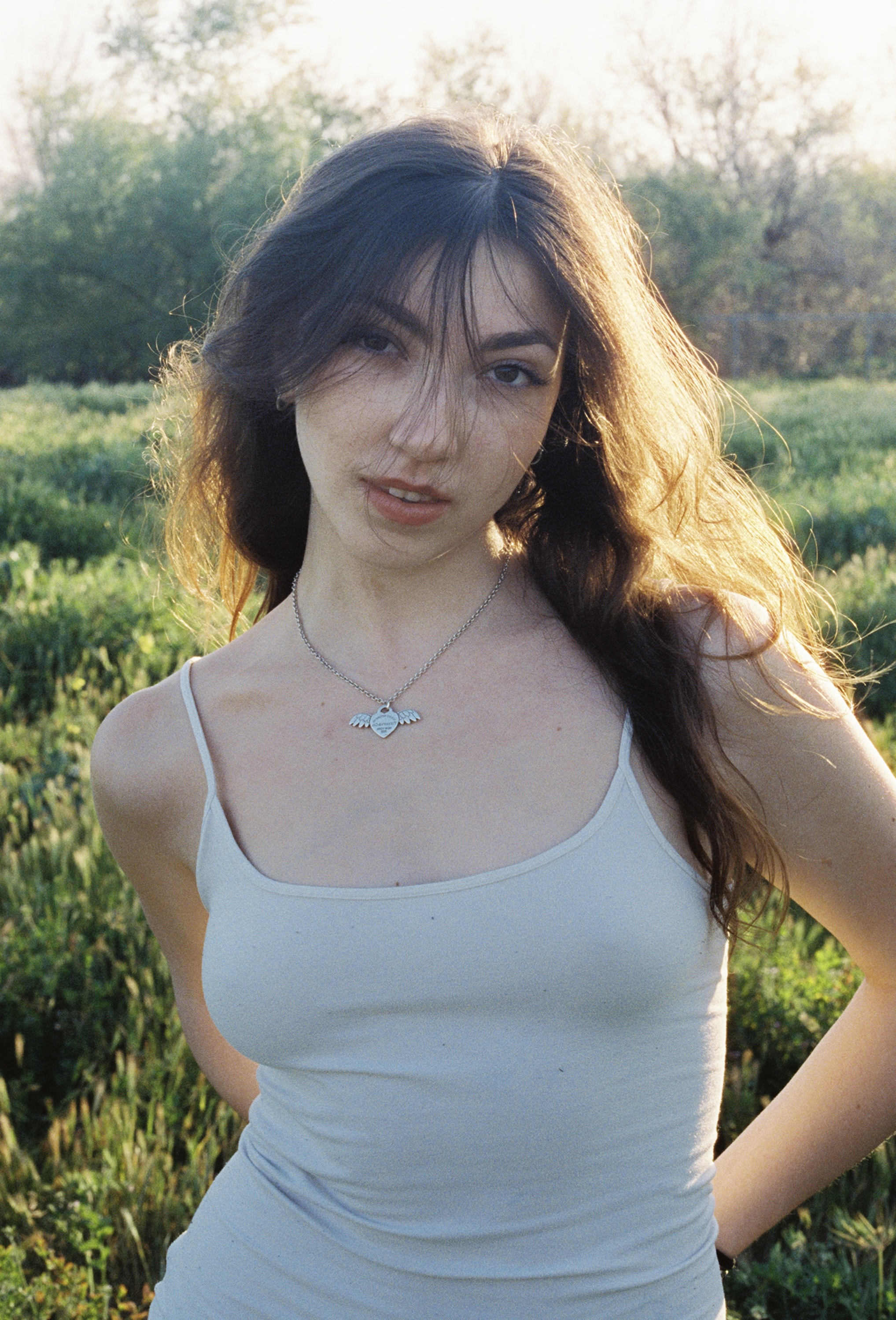



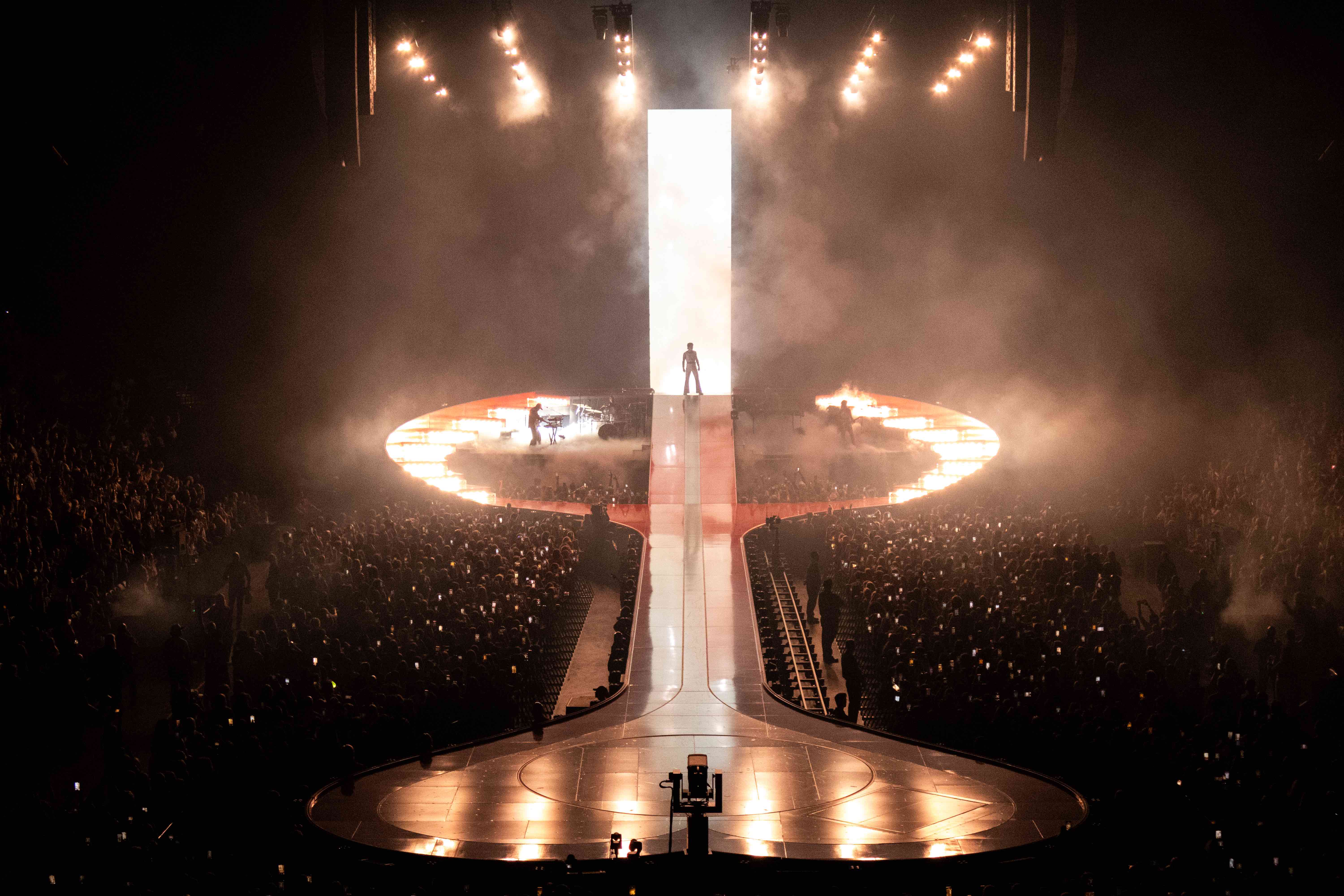


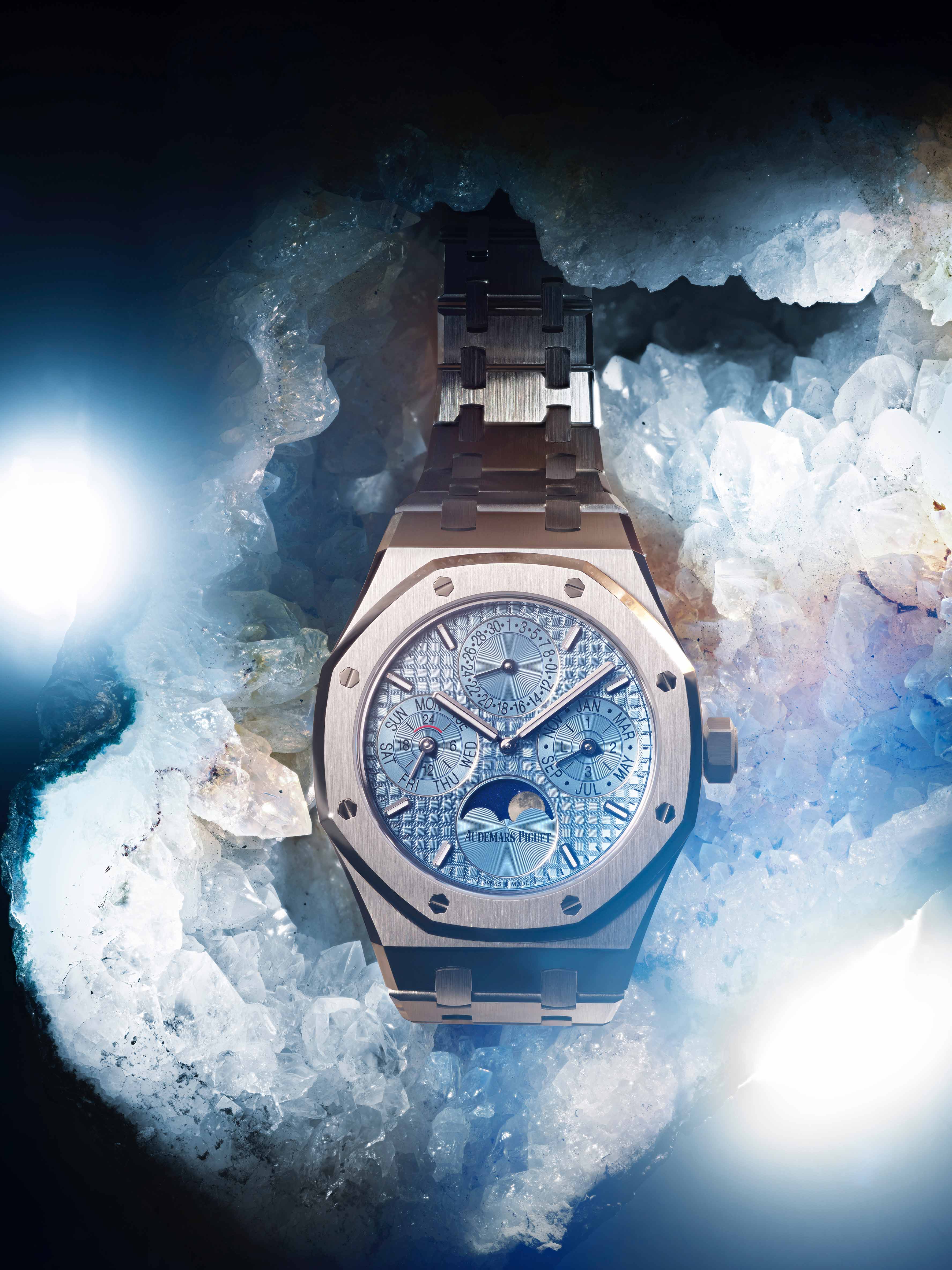
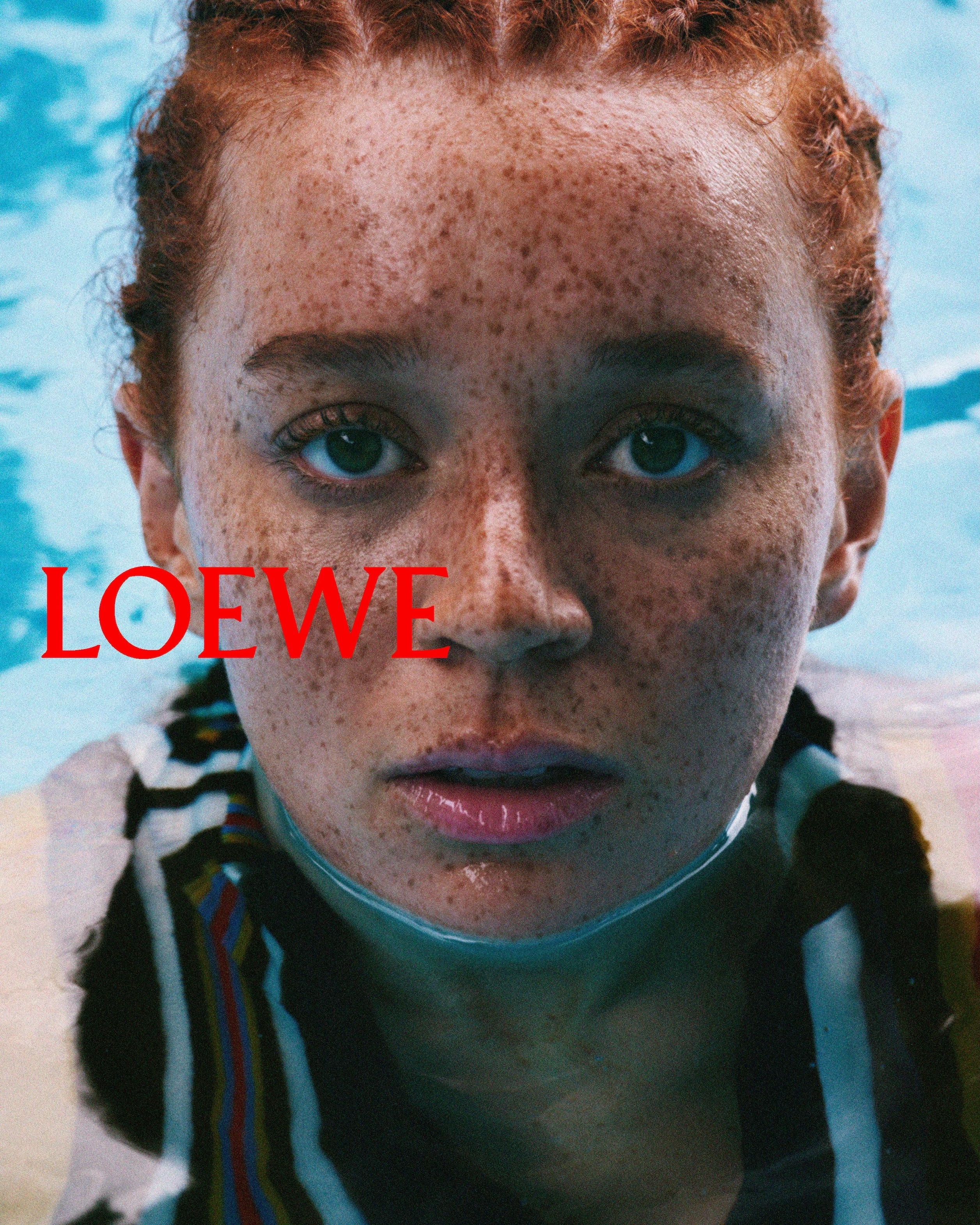
.jpg)
